 |
 |
 |
| |
HIV+ Individuals on ART Are At Risk of Polypharmacy: More Medication Increases Mortality
|
| |
| |
Reported by Jules Levin
IDWeek Oct 2-6, 2013 SF
from Jules: the average age in this study was 56 for uninfected & 54 for HIV+. 70-80% of patients had any comorbidity: 35-50% hypertension, 20-32% diabetes, 20-30% severe mental illness, 15-20% substance use disorder, 5-10% cardiovascular disease, and a few percent cirrhosis & kidney disease. About 60% of patients were taking 4 or more (4 to >12) medications: 32% 4-6 meds, 13-17% 7-9 meds, 5-7% taking 10-12 meds, and about 5% taking >12 meds. The meds taken mostly were anti-lipids, ace-inhibitors, gastric meds, anti-depressants, beta blockers, calcium channel blockers, diuretics, hypoglycemic, and genitourinary. Having diabetes, cardiovascular disease, COPD & hypertension were associated with med count. The more meds being taken risk for mortality appeared to increase, see slide below, but in the program abstract it says "Mortality risk was linearly associated with number of medications crossing significance (p=0.03) at 6 or more. With each medication beyond five, risk of mortality increased 10% in unadjusted and 5% in adjusted analyses. Those on > 5 medications had a 30% higher risk of mortality"
in their slides the authors say: polypharmacy.....More common among HIV-infected patients despite potential for risk of harms and in the abstract say: Among general medical patients, polypharmacy (defined as > 5 medications) predicts adverse drug events and non adherence and Conclude: The development and evaluation of interventions to reduce polypharmacy among HIV-infected patients are needed
-----------------------------------------
HIV+ Individuals on ART Are At Risk of Polypharmacy: More Medication Increases Mortality
PROGRAM ABSTRACT
Background: Among general medical patients, polypharmacy (defined as > 5 medications) predicts adverse drug events and nonadherence. However, observational research on polypharmacy has been limited due to confounding by indication and sample size. Using the Veterans Aging Cohort Study (VACS), we characterized polypharmacy and its association with mortality among HIV-infected (HIV+) individuals on ART and uninfected (HIV-) controls. We accounted for disease burden with the VACS Index, a validated measure of organ system dysfunction, which predicts mortality.
Methods: Cross-sectional analysis from 2009 to 2010 including HIV+ with > 12 months of ART and HIV-. VACS Index was calculated based on labs closest to the midpoint of the period. Medications were determined using electronic pharmacy fill/refill data available and were considered individually and by class using established VHA classes. Combination pills were separated into their components. Multivariable Cox proportional hazards models were used to adjust for mortality risk and adjusted hazard ratios were plotted by number of medications.
Results: Of HIV+ on ART, 64% were on 5 or more medications (42% of HIV-). After antiretrovirals, the next 5 most common medication classes were antilipemic agents, antidepressants, ACE inhibitors, beta blockers, and gastric medications.
Age, HIV status, white race, alcohol and substance use disorders, psychiatric disorders, medical diagnoses, and VACS Index scores were associated with polypharmacy. Mortality risk was linearly associated with number of medications crossing significance (p=0.03) at 6 or more. With each medication beyond five, risk of mortality increased 10% in unadjusted and 5% in adjusted analyses. Those on > 5 medications had a 30% higher risk of mortality after adjusting for VACS Index scores (HR 1.30, 95% CI 1.16-1.44); this risk was higher among HIV+ (HR 1.39, 95% CI 1.11-1.73).
Conclusion: These findings demonstrate increased risk of all-cause mortality associated with polypharmacy among a national sample of veterans with HIV. While adjustment for VACS Index helps address concern that observational data is confounded by indication, these findings support the need for the development and evaluation of interventions aimed at reducing polypharmacy among those aging with HIV.
---------------------------------
AUTHOR SUMMARY
Summary
·Treated HIV-infected patients are commonly exposed to polypharmacy
·HIV-infected patients are less likely to be prescribed non-ART medications
·Polypharmacy is independently associated with mortality among uninfected and HIV-infected patients
Conclusions
·Future studies examining longitudinal associations with polypharmacy and mortality and other health outcomes are warranted
·The development and evaluation of interventions to reduce polypharmacy among HIV-infected patients are needed
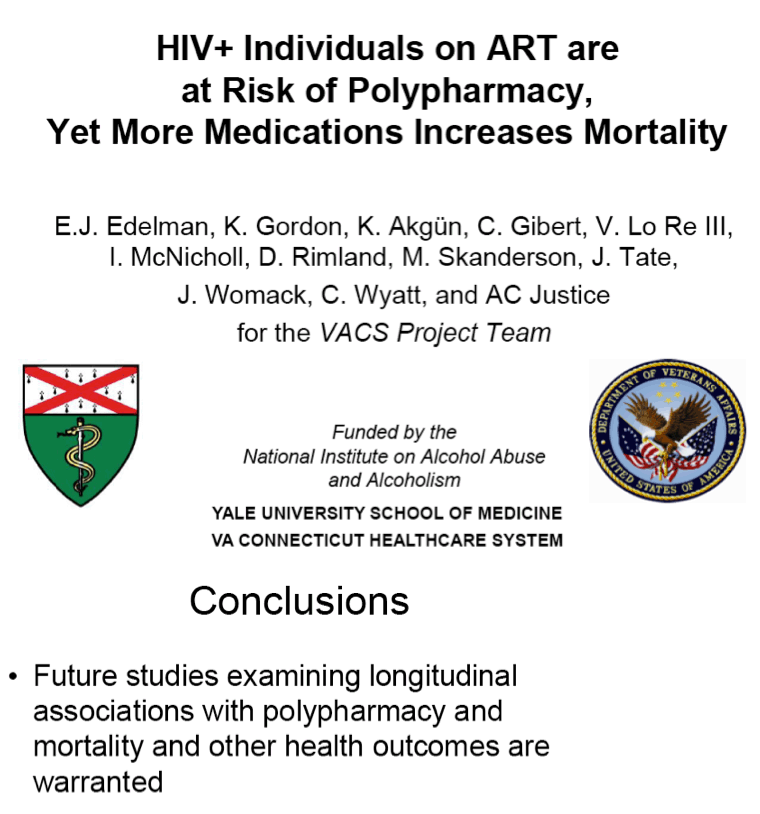
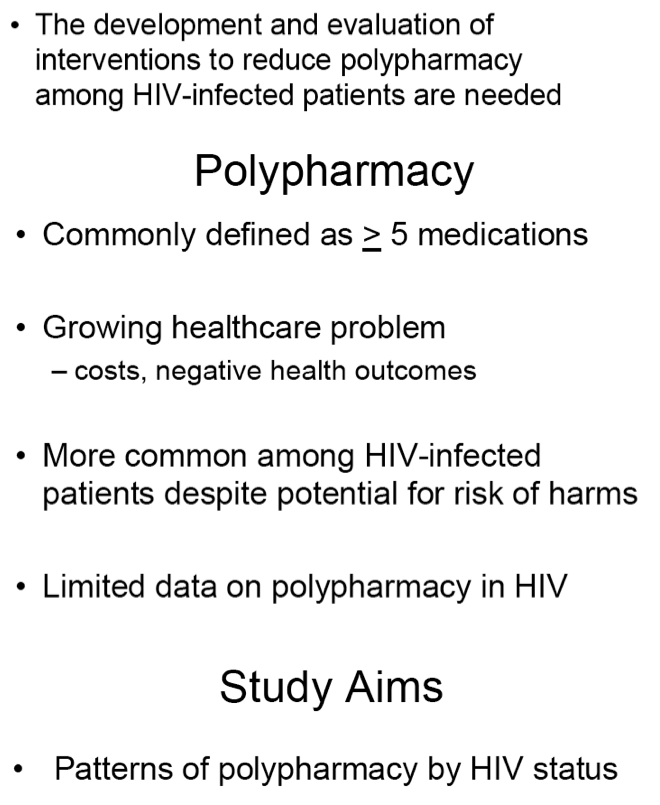
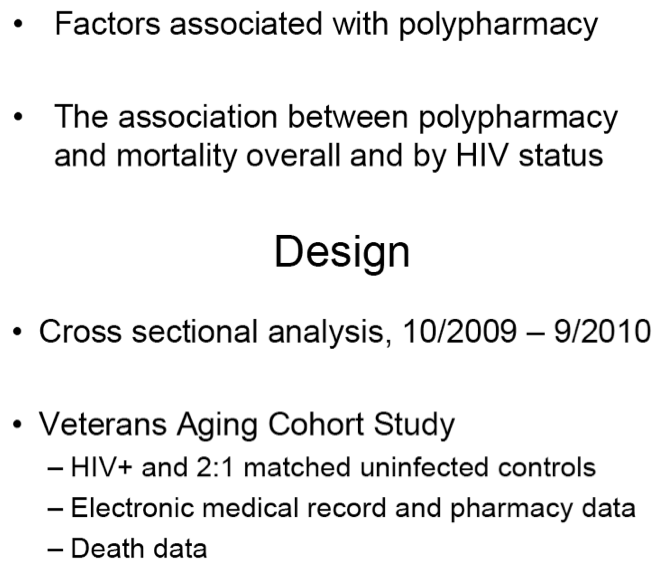
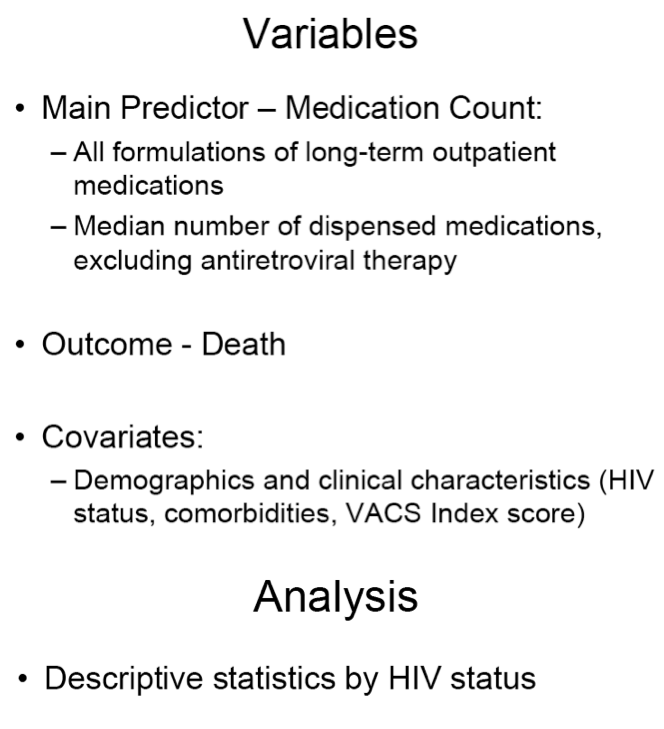
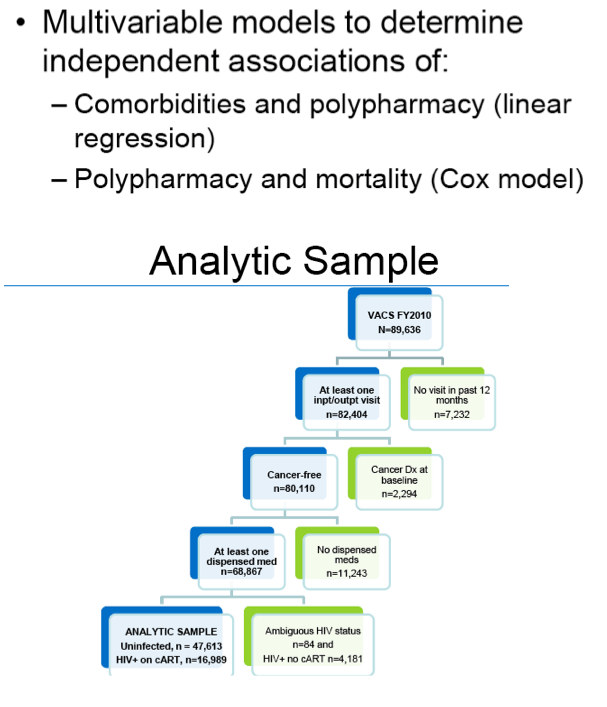
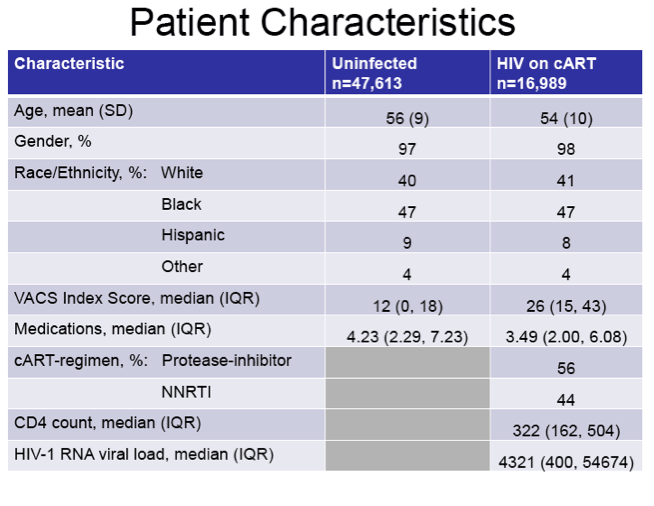
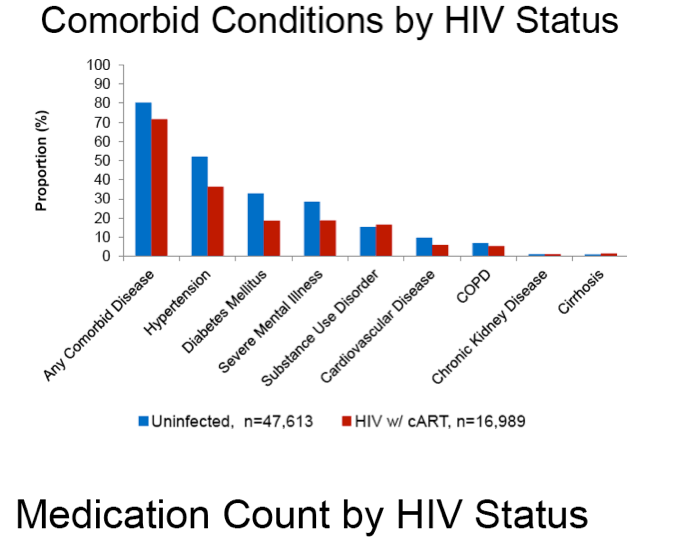
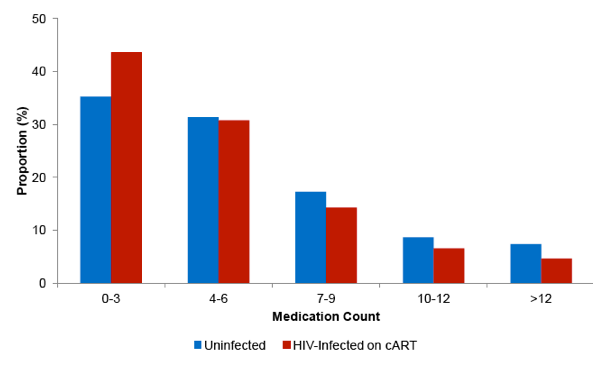

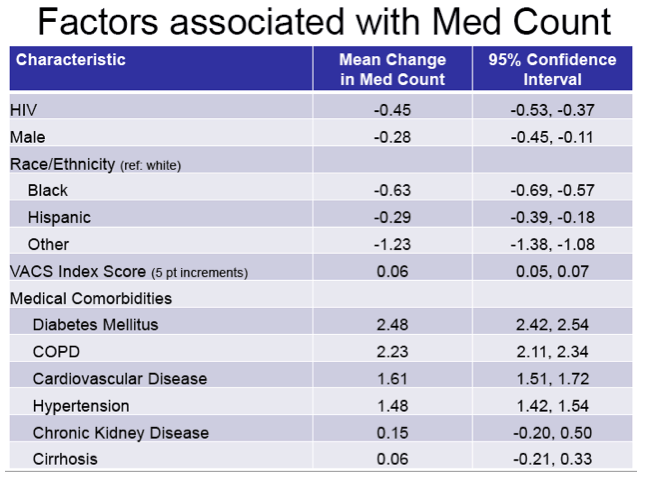
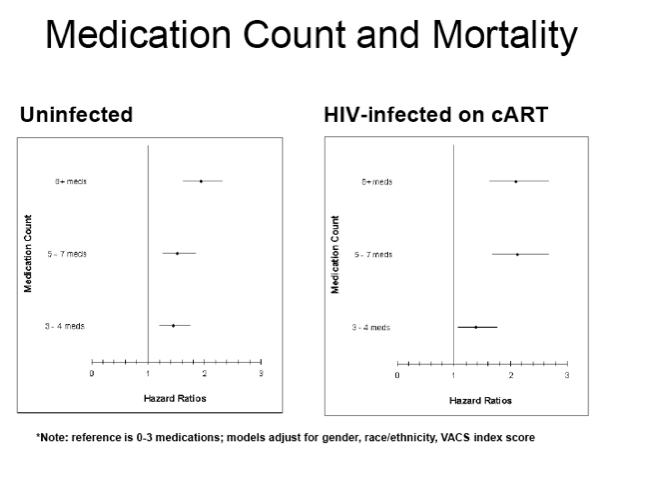
|
| |
|
 |
 |
|
|